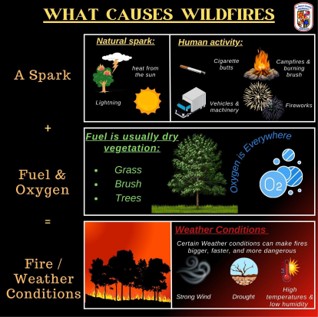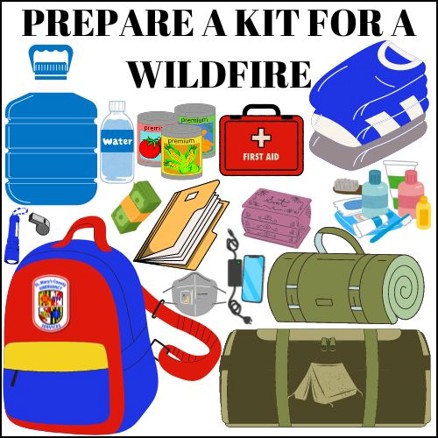Wildfires
Wildfires are caused by both natural and man-made factors. A wildfire is a large, rapidly spreading, destructive uncontrolled fire that affects various ecosystems. These fires have been occurring for millions of years and are not confined to a specific location or environment. The frequency and severity of wildfires are on the rise, posing significant risks to communities, wildlife, and the environment. Strategies to handle wildfires involve controlled burns, establishing firebreaks, and improving firefighting resources and technology.

Types of Wildfires
Wildfires can be categorized into three different types of fires: ground fires, surface fires, and crown fires.
- Originating from buried, decomposed vegetation
- Progressing slowly beneath the surface but capable of sparking surface fires
- Challenging to put out when there is an ample fuel source
- Able to persist for months or even years
- Fueled by surface detritus like fallen leaves, twigs, and dry vegetation
- Typically, these fires are the easiset to put out.
- Burn in the tree canopy
- Burns extremely hot and often spreading rapidly
What should you do before, during, and after a wildfire?
Before a Wildfire
- Gas up your car. The gas stations will not be open in an event of evacuation.
- Expect to evacuate at a moment notice. Have emergency supplies packed and ready to go.
- Place a ladder against your house incase firefighters need quick access to help you.
- Turn off the propane tanks and move grills and other appliances far from the home.
- Bring lawn furniture indoors.
- Connect garden hoses to the spigots on your front and back yard so that the house can be hosed down if needed.
- Keep contact with loved ones and neighbors.
- Make arrangements for pets and livestock in advance. Include pets in your evacuation plan whenever possible.
- Expect long-term power outages.
During a Wildfire
- Under mandatory evacuation, evacuate immediately.
- Under voluntary evacuation, do the following:
- Turn on your patio lights so that firefighters can see your house if smoke is blocking their view.
- Never fly a drone during a fire. Emergency helicopters cannot fly when there are drones due to the risk of collision.
After a Wildfire
- Do not consume tap water unless the city says it is safe to do so.
- Expect the power to be out for an extended amount of time after the wildfire.
- Do not go near downed power lines.
- If your house did not suffer any damages, inspect utilities and turn them back on. If you turned the gas off, make sure to call the gas company for help.
- Contact your insurance company if your house suffered any damages. Take photos of the damages.
How can you prepare?
Preparedness Kit
Visit https://www.stmaryscountymd.gov/ES/BuildAKit/ for information on what to include in your family’s emergency kit!
For wildfire preparedness, consider adding:
- Respirator masks and air purifiers: The air quality may be horrible for the first weeks following a wildfire.
- A whistle
- Copies of important documents in a sealed fire-resistant container

